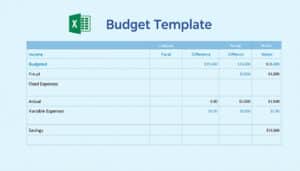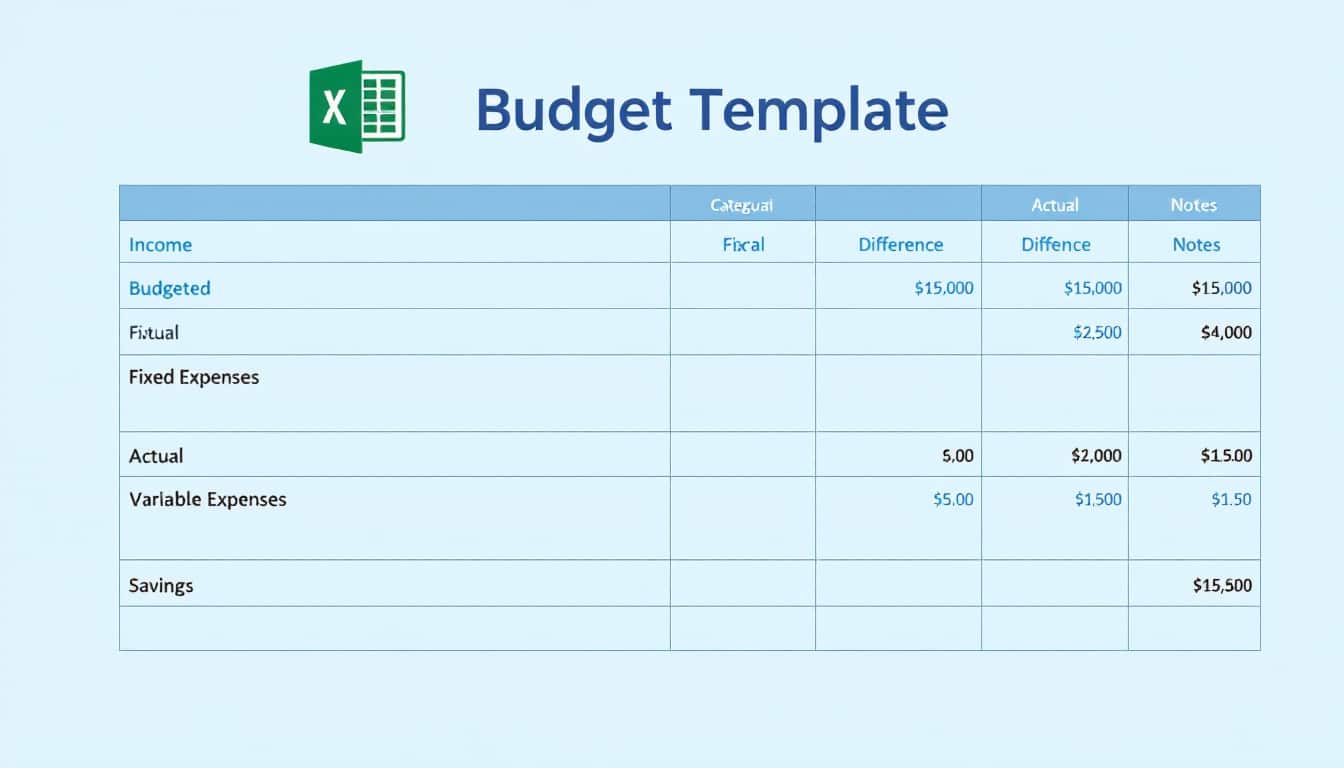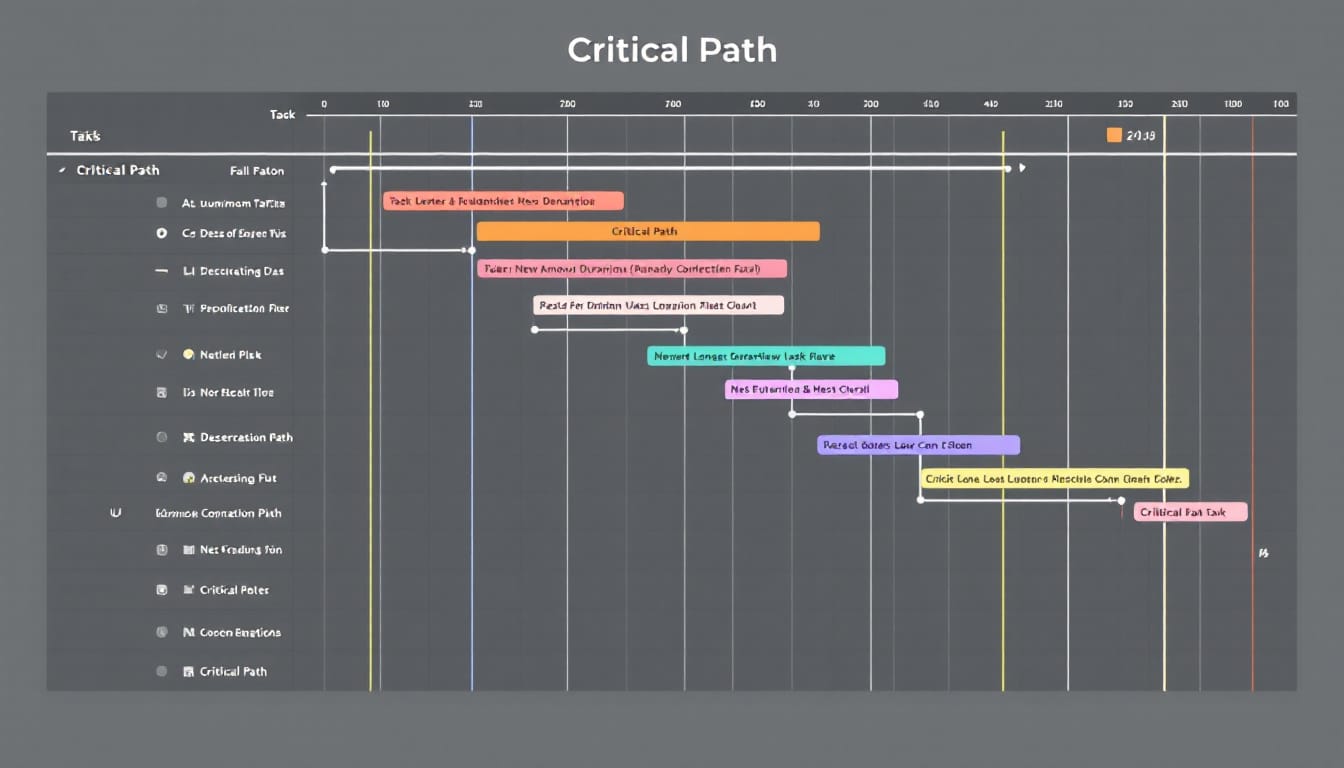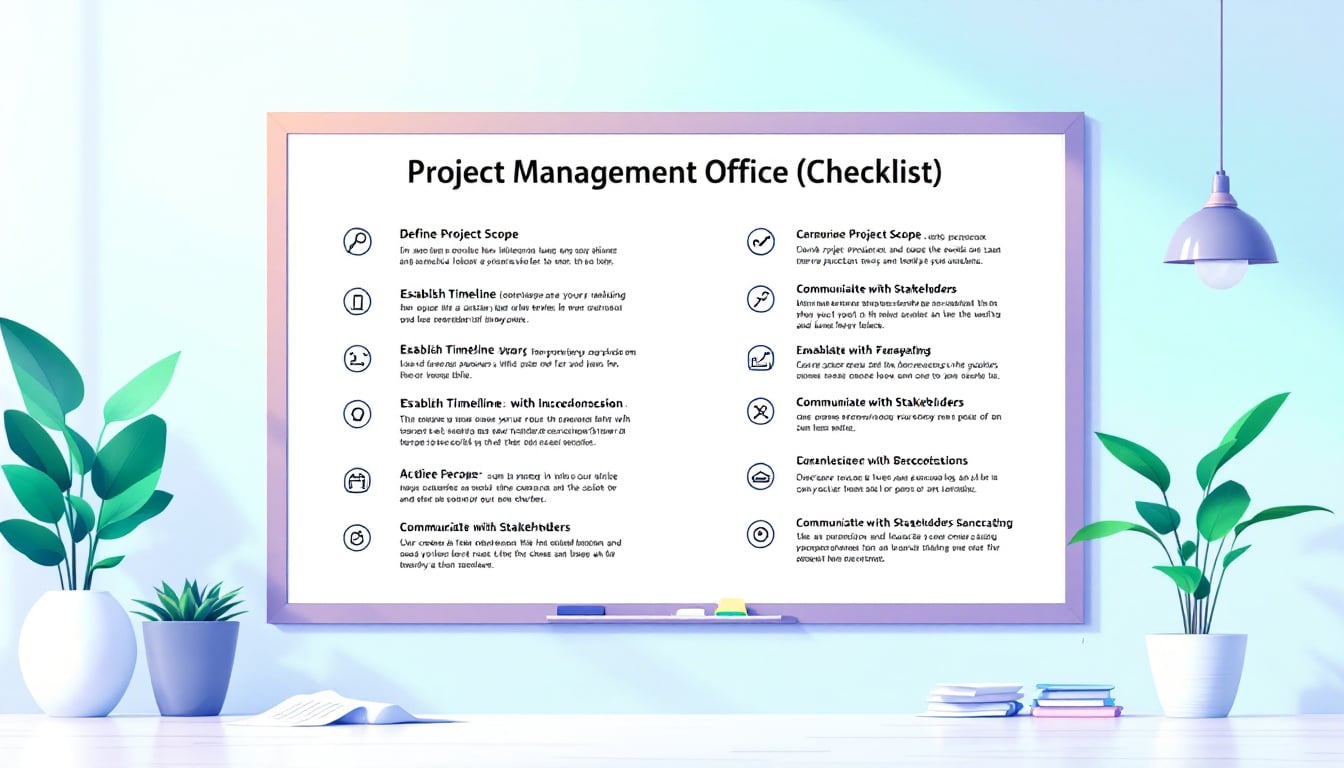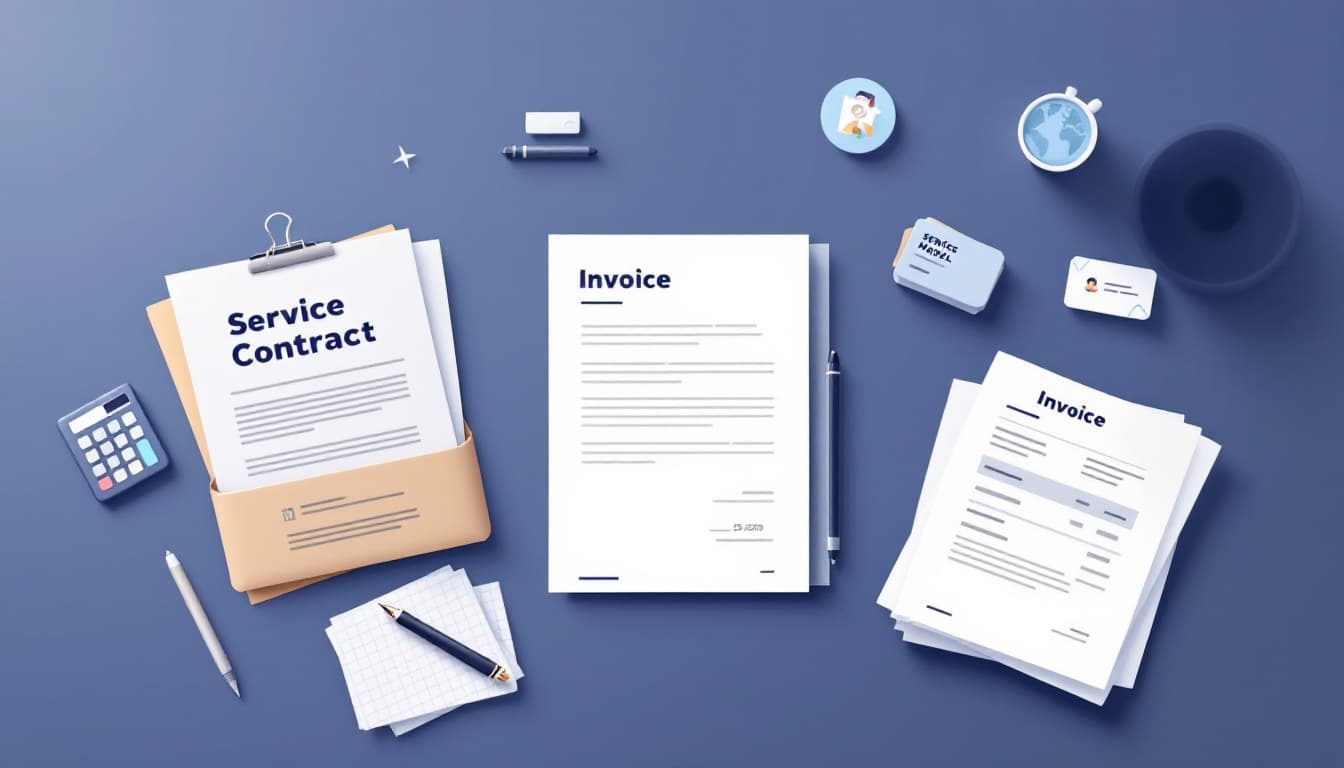“`html
🔥 Nous recommandons Ideamap
Ideamap est l’outil idéal pour un brainstorming ou un projet collaboratif. Grâce son interface facile et à ses fonctions IA, Ideamap booste votre créativité tout en favorisant une meilleure organisation de vos idées pour atteindre vos objectifs.
Launching a project successfully relies on careful planning. Every step must be meticulously orchestrated to meet deadlines and budgets. A solid project plan is the key that unlocks the door to flawless execution.
Establishing a project plan is not just a simple list of tasks. It is a detailed roadmap that guides the team toward the set objectives. By clearly defining the goals, the scope, and the resources, it ensures that each member knows exactly what is expected. A good plan also takes into account potential risks and ways to mitigate them. Finally, it allows tracking progress and managing any changes effectively.

What is an effective project plan?
An effective project plan is a detailed document that serves as a roadmap for executing a project. It clearly defines the objectives, scope, schedule, necessary resources, potential risks, and the responsibilities of each team member. By structuring these elements, the project plan ensures that all stakeholders are aligned and that the project progresses coherently towards its objectives.
A well-crafted plan helps to prevent budget overruns and delays by anticipating obstacles and putting strategies in place to overcome them. Moreover, it facilitates communication among team members and stakeholders, ensuring that everyone understands their role and associated expectations. By integrating project management tools, such as Gantt charts or Kanban boards, the plan becomes a dynamic tool that can be adjusted in real time according to the project’s needs.
To learn more about the essential elements to consider in project management, refer to this article.
Why is it crucial to write a project plan?
Writing a project plan is a fundamental step to ensuring the success of a project. Without adequate planning, projects risk lacking direction, exceeding deadlines and budgets, or failing to meet stakeholder expectations. A structured project plan clarifies objectives, optimally allocates resources, and defines key milestones of the project.
A good project plan also facilitates risk management by identifying potential obstacles and developing mitigation strategies from the outset. It serves as a reference throughout the project life cycle, helping teams stay focused on their tasks and adjusting their actions according to project developments.
Furthermore, a well-written project plan enhances communication among team members and stakeholders. It ensures that all participants have a common understanding of objectives, responsibilities, and deadlines, which reduces misunderstandings and fosters effective collaboration.
How to define the scope of your project?
Defining the project scope is a crucial step in creating an effective project plan. The scope delineates what is included and what is excluded from the project, thereby establishing clear boundaries and avoiding the phenomenon known as “scope creep“. To define the scope, start by identifying the main objectives of the project and the expected deliverables.
It is also important to detail the tasks necessary to achieve these objectives, using tools like the Work Breakdown Structure (WBS). This method allows breaking down the project into smaller, more manageable tasks, thereby facilitating responsibility assignment and deadline management.
Additionally, writing a scope management plan is essential for controlling any potential changes. This plan should define the change approval processes and acceptance criteria, ensuring that any modification to the scope is rigorously evaluated before being integrated into the project.
To discover how to create a project activity plan, visit this resource.
What resources are needed for your project?
Identifying the necessary resources is a key step in project planning. This includes not just human resources but also materials, tools, and technologies essential for project completion. A well-defined resource management plan ensures that the right resources are available at the right time, optimizing their use and minimizing waste.
Start by creating a resource breakdown structure that categorizes resources by type and availability. This facilitates the efficient allocation of resources and allows for quickly spotting potential shortages or overcapacities. Next, establish a resource schedule to plan the utilization of each resource throughout the project, thus avoiding conflicts or delays.
Moreover, a resource management plan should include acquisition and optimization strategies, taking into account budget constraints and project priorities. This may involve training team members, purchasing specific equipment, or outsourcing certain tasks.
For more details on project evaluation and measuring their value, refer to this article.
How to estimate costs and establish a budget?
The cost estimation and establishment of a budget are fundamental elements in project management. A well-defined budget allows for controlling expenses, avoiding overruns, and ensuring the financial viability of the project. To estimate costs, start by identifying all the necessary resources and assigning them an associated cost.
Use techniques such as analogous estimation or parametric estimation to obtain accurate forecasts. Creating a project budget involves compiling all these estimates, also including a margin for contingencies. It is essential to define a cost management plan that outlines how costs will be monitored, controlled, and adjusted throughout the project.
Establishing a baseline budget allows for comparing actual costs to initial forecasts, thereby facilitating the detection of variances and the implementation of necessary corrective actions. Regular expense tracking ensures that the project remains aligned with its financial objectives.
To learn how to create a project plan with supporting examples, visit this page.
How to identify and engage stakeholders?
The identification of stakeholders is essential for the success of any project. Stakeholders include all individuals or groups affected by the project, whether they are internal or external. A stakeholder management plan defines how these individuals or groups will be involved and informed throughout the project.
Start by creating a stakeholder register that lists all potential stakeholders, assessing their levels of influence and interest. This analysis helps prioritize communication efforts and tailor engagement strategies according to each stakeholder’s specific needs.
Regular and transparent communication is crucial for maintaining trust and engagement among stakeholders. Use tools such as follow-up meetings, progress reports, and dedicated communication channels to share relevant information and gather feedback.
Additionally, a stakeholder management plan should include tactics for managing expectations and resolving potential conflicts, thus ensuring smooth and productive collaboration throughout the project.
How to manage risks in your project plan?
Risk management is an essential component of an effective project plan. It involves identifying, assessing, and mitigating potential risks that could impact the success of the project. A well-structured risk management plan minimizes uncertainties and ensures better resilience against unforeseen events.
Start by creating a risk register, where you document each identified risk, its potential impact, and likelihood of occurrence. Use a risk analysis matrix to prioritize risks according to their severity and probability, facilitating focus on the most critical ones.
Develop risk response strategies for each identified threat, whether it is to avoid, transfer, reduce, or accept it. Ensure that contingency plans are in place to address risks that materialize, guaranteeing swift and effective responses.
Continuous monitoring and periodic reevaluation of risks are essential to adjust strategies according to the project’s evolution. This allows for maintaining proactive risk management throughout the project life cycle.
To learn more about creating a project plan, visit this resource.
What is the importance of communication in project management?
Effective communication is crucial for the success of a project. It ensures that all stakeholders are informed, aligned, and engaged throughout the project life cycle. A well-defined communication plan facilitates information sharing, problem-solving, and coordination of efforts among team members.
A good communication plan should specify the communication protocols, including the channels to be used, the frequency of updates, and the types of reports required. This ensures that information flows smoothly and that everyone is aware of progress, challenges, and any potential changes.
Moreover, regular communication fosters transparency and strengthens trust between team members and stakeholders. It also allows for the quick detection and resolution of conflicts or misunderstandings before they impact project progression.
Integrating appropriate communication tools, such as project management platforms or collaboration software, can greatly enhance the effectiveness of exchanges and coordination of tasks.
How to ensure the quality of your project?
Ensuring the quality of the project is essential to meet stakeholder expectations and guarantee the satisfaction of end users. A quality management plan defines the standards, testing procedures, and quality assurance methods necessary to achieve the project’s quality objectives.
Start by defining the quality standards that apply to your project, considering stakeholder requirements and industry standards. These standards should be clear, measurable, and aligned with the project’s objectives.
Implement quality control procedures to inspect and test deliverables at every stage of the project. This includes regular reviews, unit testing, and quality audits, which allow for detecting and correcting defects before they become problematic.
Additionally, quality assurance aims to prevent defects by improving work processes and training team members in best practices. This helps maintain a high quality level throughout the project.
How to manage changes in your project plan?
Change management is an inevitable aspect of any project. Modifications may occur due to new requirements, unforeseen constraints, or stakeholder feedback. A well-structured change management plan allows for managing these adjustments in an organized and controlled manner.
Start by establishing a change request process that defines how changes will be proposed, assessed, and approved. This process should include standardized forms for submitting change requests and clear criteria for their evaluation.
Form a change control board composed of key members of the project team and stakeholders, tasked with reviewing and approving change requests. This board should evaluate the impact of each change on the schedule, budget, and quality of the project before making a decision.
Once approved, changes should be integrated into the project plan transparently, updating relevant documents and communicating the changes to the entire team. This ensures that all members are informed of the new directives and that the project can continue without interruption.
The essential tools for writing your project plan
To write an effective project plan, it is essential to have the right tools. Project management software, such as ProjectManager, offers advanced features for creating and tracking project plans. They allow you to visualize the schedule using Gantt charts, manage tasks on Kanban boards, and monitor resources and costs in real time.
A project plan can also benefit from using pre-established templates, ensuring the consistency and completeness of information. For example, by downloading a free project plan template, you can organize key elements such as scope, schedule, budget, and risk management in a structured manner.
Online collaboration tools facilitate the sharing of information and communication among team members, even remotely. Platforms like ProjectManager allow teams to share files, comment at the task level, and stay informed through email notifications and in-app alerts.
To learn how to manage a project plan with an example, refer to this resource.
How to track and adjust your project plan
Continuous tracking and adjustment of the project plan are essential to ensure that the project stays on track. Use real-time dashboards to monitor key performance indicators such as cost, schedule, and workload. These tools allow for quickly spotting variances and making informed decisions to correct the project’s trajectory.
Integrating customizable reports into your project management software facilitates detailed data analysis and provides a clear overview of progress made. Use these reports to communicate regularly with stakeholders, sharing accurate and relevant updates on the project’s status.
When adjustments are necessary, it’s important to reevaluate tasks, resources, and timelines. Adopt an agile approach by regularly revising the project plan and adjusting priorities based on emerging needs. This allows for remaining flexible and quickly adapting to changes while keeping on track towards the set objectives.
Finally, ensure that all changes are documented and communicated effectively to the entire team. This guarantees that everyone remains informed of the new directives and that the project can continue smoothly and efficiently.



